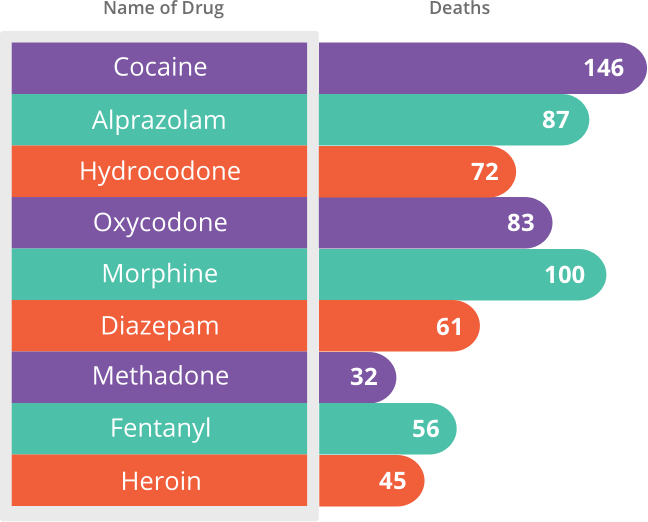Nevertheless, theses detox spaces are close to personnel workplaces for frequent monitoring and simple access to personnel. Due To The Fact That American Dependency Centers specializes in dual diagnosissimultaneously treating substance abuse and behavioral health issuesour certified psychiatrists are readily available during the detox procedure to attend to high levels of stress or anxiety. The two primary categories of dependency treatment are inpatient and outpatient rehabilitation.
Some treatments that are frequently utilized to treat addiction include:1 Cognitive-Behavioral Treatment. Community Reinforcement Method. The Matrix Model. Contingency Management. Motivational Enhancement Treatment. Family Behavior Modification. Treatment strategies will vary from private to specific. No individual's path to recovery will be identical to another's. Dependency is a chronic condition defined by intense drug cravings and compulsive substance use no matter the unfavorable effects.
2 Persistent substance abuse likewise frequently results in physiological reliance on the substance; when you're reliant, you'll experience distressing withdrawal symptoms when you attempt to stop. These withdrawal signs typically contribute to continued drug abuse, Visit this page as people might use the drug in order to alleviate the unwanted signs or postpone their arrival completely.
Relapsing is considered a typical and typical obstacle in the healing process. 2 Substance abuse treatment programs provide thorough treatment for addiction, but they do not offer a "remedy." A treatment suggests that the person is no longer affected by a condition once they total treatmentafter treatment, a person might be sober however will still need to handle their addiction throughout their lives using the tools they found out in rehab.
These interventions are focused on rectifying drug-using and maladaptive habits and changing them with healthy and positive habits. 2 Further, someone being treated for a compound use disorder will be examined for any possible co-occurring psychological health disorders (known as a double medical diagnosis), such as anxiety, stress and anxiety, post traumatic tension disorder (PTSD), character conditions, or schizophrenia.
Addressing both of these conditions during treatment increases the possibility of having a positive treatment outcome. 3 Addiction can absolutely be treated, however simply a couple of days or months of abstaining isn't usually adequate to make lasting behavioral modifications. 2 Instead, experts view healing as a continuous process that needs long-term support and relapse prevention training.
Aftercare treatment Addiction Treatment Facility can include self-help groups (such as SMART Healing), 12-step conferences (such as Narcotics Anonymous), alumni programs, sober living homes, specific therapy, and group therapy. It's crucial to comprehend that no single treatment type is appropriate for everybody. That is why it's vital that every treatment program has a psychological health or addiction professional conduct an intake assessment before creating an individualized treatment plan according to the patient's unique requirements.
All About What Would I Use To.convince Audience Of Opioid Addiction Treatment
Case history. Mental status. Crucial signs, such as temperature level and pulse. Patterns of drug or alcoholic abuse. Results of urine test for compound usage. Previous detox or addiction treatment experiences. Demographics such as age, ethnicity, and level of education. Living conditions, transportation, legal status, dependent kids, and financial scenario. Danger of violence or suicide.
As soon as an assessment is carried out and a treatment plan is produced, the treatment group should re-assess the individual on an ongoing basis in order to modify the plan as required. 4 This guarantees that the patient is receiving the most efficient treatment for them throughout the healing procedure. Evidence-based treatments are interventions that have a considerable body of research supporting their effectiveness in dealing with dependency.
Below is a list of frequently utilized evidence-based therapies and the kinds of drug abuse they deal with:6 -11: This therapy is typically used to the treatment of numerous dependencies, including those to alcohol, cannabis, cocaine, and methamphetamine. The therapist evaluates the connection between habits, feelings, and ideas, and helps the patient to identify and repair their unfavorable patterns in order to give up utilizing drugs and avoid relapse.
: CM is often used to deal with people recuperating from an addiction to stimulants, cannabis, alcohol, and opioids. Treatment team member supply patients with tangible benefits (such as prize money or coupons, food, or other goods and services) for showing favorable behaviors and evidence of drug abstinence, such as supplying a substance-free urine sample.
It is normally utilized to deal with dependencies to cocaine or alcohol. This program consists of extensive weekly therapy and therapy sessions in which the patient builds regression avoidance skills, receives professional training, participates in new recreational activities, and builds brand-new social media networks. Much like CM, clients get vouchers for supplying substance-free urine samples a couple of times weekly.
: This type of therapy, which is frequently utilized to deal with alcohol or marijuana dependency, helps to increase a person's motivation to make a favorable change in their life by entering drug abuse treatment. The therapist examines the client, teams up to develop a strategy for change, instills coping skills, and encourages dedication to abstaining.
: This kind of treatment is mostly used to treat people addicted to stimulants, such as drug and methamphetamine. The Matrix Model combines a number of other treatment approaches and includes group therapy, household counseling, drug education, self-help participation, and regression avoidance strategies. Other parts of treatment include recovery skills groups, family education groups, 12-step programs, social support, regression analysis, and urine tests.
How To Verify Addiction Treatment Centers Qualifications Fundamentals Explained
This kind of therapy involves at least one substantial person in the client's life, whether it be a moms and dad, romantic partner, or sibling, and integrates family therapy with contingency management. The counselor helps the patient and loved one in improving their interpersonal abilities in the house. Likewise, behavioral goals are set and after that if they're satisfied, the better half in treatment will Find more information offer the patient with a reward or coupon.
Medical detox is a group of interventions planned to manage withdrawal and achieve medical stability. Medications are frequently important in assisting an individual during this uneasy and sometimes agonizing process. Medications can assist to lower yearnings, reduce withdrawal symptoms, and avoid complications. Not all substance withdrawal syndromes can be treated with detox medications, nevertheless; for instance, there are no medications particularly authorized for handling stimulant dependence and withdrawal.

There are a number of medications available for the management of opioid and alcohol withdrawal. These include:5: This complete opioid agonist is capable of displacing heroin and prescription painkillers at the opioid receptors in the brain. By communicating with and triggering these receptors, methadone helps to re-stabilize certain brain operating, mitigating opioid withdrawal symptoms and cravings to increase the individual's comfort during withdrawal (how many addiction treatment centers in ma).
Since it is an opioid, it does have prospective for abuse.: This partial opioid agonist also displaces opioids of abuse at the opioid receptor websites and eases opioid withdrawal and cravings. As a partial agonist, buprenorphine has a ceiling to its impactsincluding its capacity for attaining a subjective, rewarding highwhich assists to minimize its abuse potential.
Buprenorphine is regularly developed in mix with naloxone to even more discourage abuse.: This non-opioid drug is typically utilized in mix with other opioid detox medications to handle the free arousal symptoms of opioid withdrawal, such as hypertension and fast pulse.: Benzodiazepines, including Valium and chlordiazepoxide, are the preferred class of medications to manage intense alcohol withdrawal.
